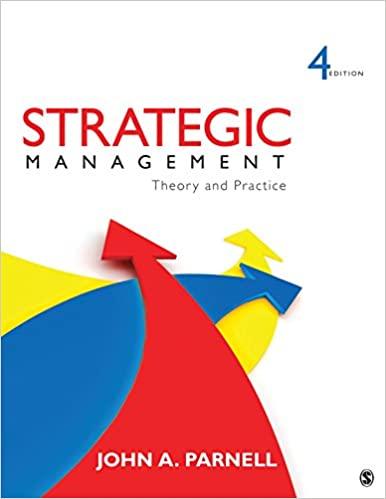Bernard Kroger was only 22 when he launched the Great Western Tea Company in 1883. Growing to
Question:
Bernard Kroger was only 22 when he launched the Great Western Tea Company in 1883.
Growing to 40 stores in the Cincinnati area, the company became known as Kroger Grocery and Baking Company in 1902. Kroger continued to grow rapidly in the 1900s and 1910s, acquiring a number of smaller grocery stores. The company acquired Piggly Wiggly stores in six states in the late 1920s, as well as most of the rival’s corporate stock (which it did not sell until the early 1940s). Kroger reached 5,575 stores before the stock market crash in 1929. Interestingly, Bernard Kroger sold his shares and retired just 1 year prior to the crash.
After a brief decline in the number of stores during the Great Depression, Kroger began to grow again during the following three decades. In the 1970s, Kroger began to emphasize internal growth; Kroger added only a small number of new stores, but its total floor space nearly doubled.
Kroger grew through acquisitions again in the 1990s, including Fred Meyer in 1999 and various units from Winn-Dixie, Hannaford, Albertsons, Farmer Jack, and Scott’s Food and Pharmacy in the 2000s. Kroger acquired a majority stake of The Little Clinic—an in-store walk-in medical clinic—in 2008 and completed the acquisition in 2010.
Today, Kroger is the leading supermarket chain in the United States but would be considered a distant second if Wal-Mart were included in this category. Kroger operates more than 2,500 supermarkets; 800 convenience stores; 125 supermarket fuel centers; and 430 jewelry stores. The company also manufactures and processes food for private label sales in its own supermarkets. Kroger stores are primarily located in the Midwest, South, and Western parts of the United States although it continues to acquire smaller supermarkets throughout the country, as well as poor performing outlets of its major competitors. Retail operations account for about 98% of company revenues.
Case Challenges
1. What forms of differentiation are available to supermarket chains? What forms is Kroger using effectively?
2. Should Kroger continue its acquisition strategy in the future? Why or why not?
3. Does the Internet pose specific opportunities or threats to Kroger? How should Kroger prepare to meet these challenges?
Step by Step Answer:






